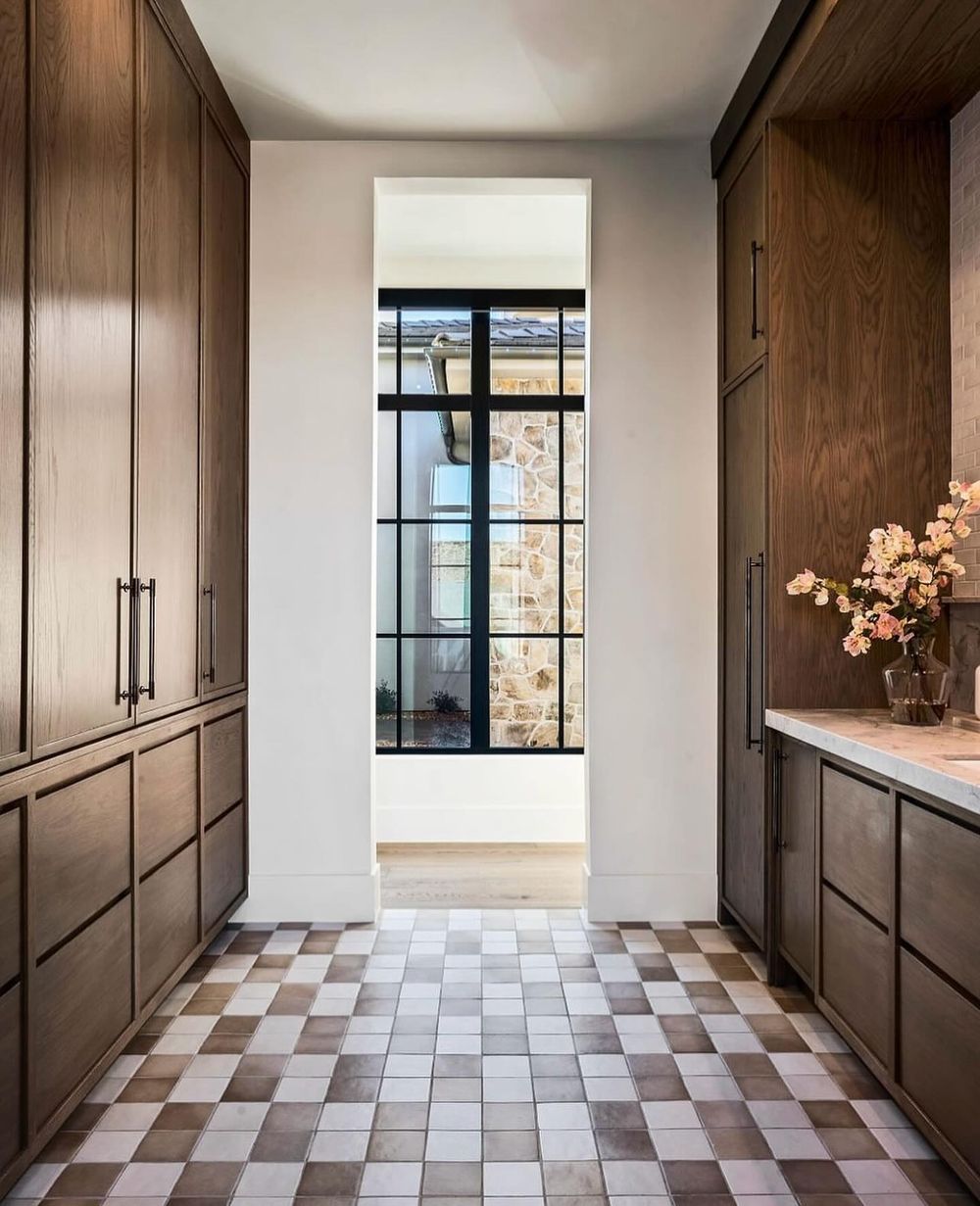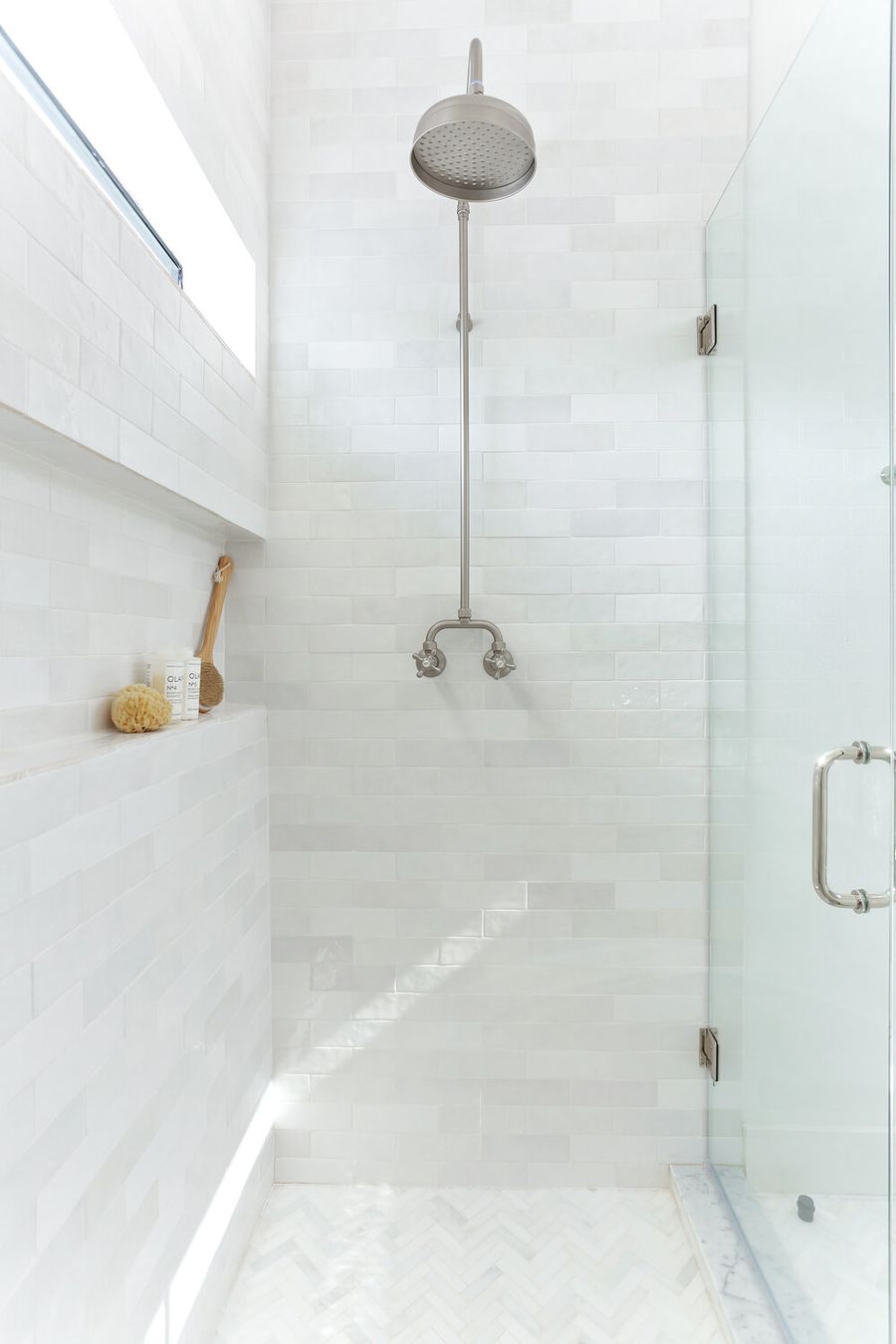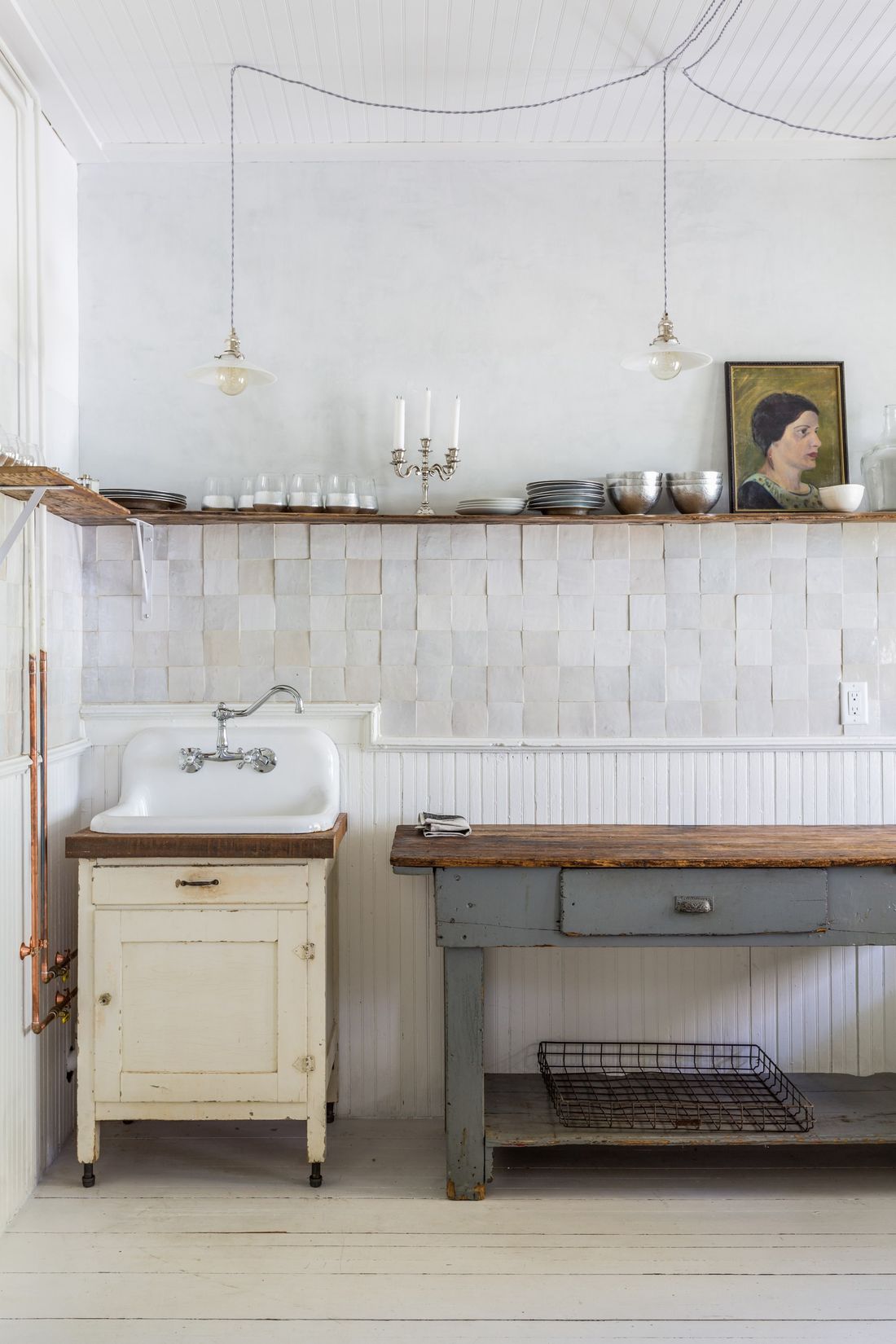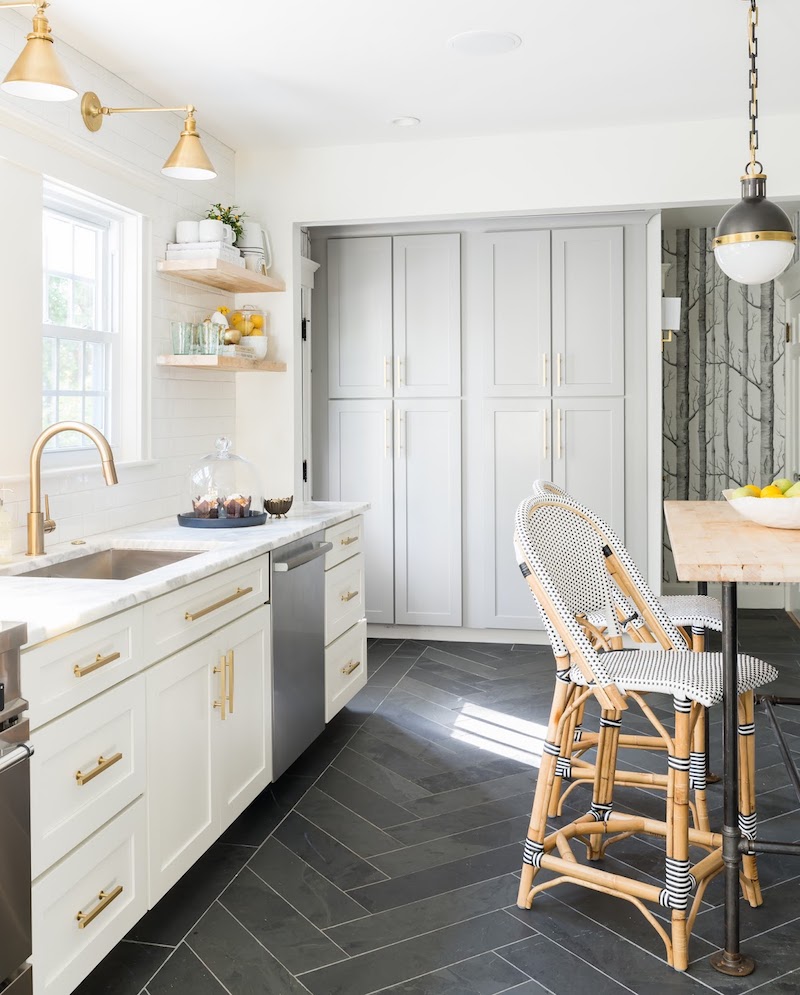Tile decorating trends come and go, but one style that’s here to stay is the large format tile. As the name implies, large format tiles are bigger than your average 12″ x 12″ tile, typically ranging from 18″ x 18″ up to a whopping 4′ x 8′.
We’ll discuss the pros and cons of using large format tiles in your home, recommendations on where to use them, and some of my favorite looks and styles. Large format tiles can make a huge impact in your space, creating a sleek, modern aesthetic or an elegant, luxurious feel. But their size also requires some special consideration when planning the installation.
Read on to learn everything you need to know before taking the plunge with these statement-making tiles!
What is considered a large format tile?
A large format tile is generally defined as any tile that has at least one side longer than 15 inches. These tiles can come in various shapes such as rectangular or square.
Large format tiles are commonly used for floors and walls in both residential and commercial settings. They are known for creating a seamless, open look due to fewer grout lines. Remember, installing large format tiles requires specialized setting materials and techniques for proper adhesion and alignment.
Is large format tile cheaper?
The cost of large format tiles varies widely based on factors such as material, quality, and brand. Generally speaking, large format tiles are not necessarily cheaper per square foot than smaller tiles. In some cases, they may be more expensive due to the specialized manufacturing process.
However, large format tiles require fewer grout lines, which could reduce the amount of grout and labor needed for installation. This could result in cost savings in the overall project. It’s important to consider both material and installation costs when comparing the price of large format tiles to smaller ones.
Do large format tiles make a room look bigger?
Yes, large format tiles are often used to make a room appear larger and more open. The more infrequent grout lines contribute to a seamless, unbroken surface, which can visually extend the space. This creates an illusion of a more expansive area. The tiles’ size and the way they are laid out can also influence perception.
For example, laying tiles diagonally can make the room look wider. However, the effect can vary based on the room’s existing size, layout, and other design elements. Therefore, while large format tiles can enhance the sense of space, the overall impact will depend on the room’s specific conditions.




